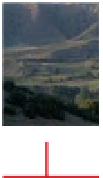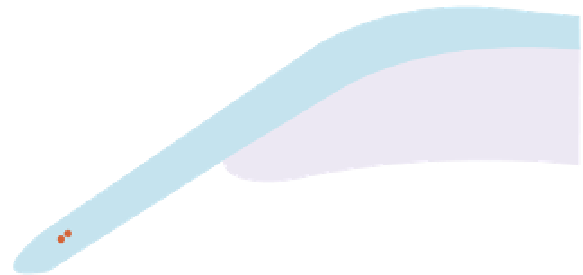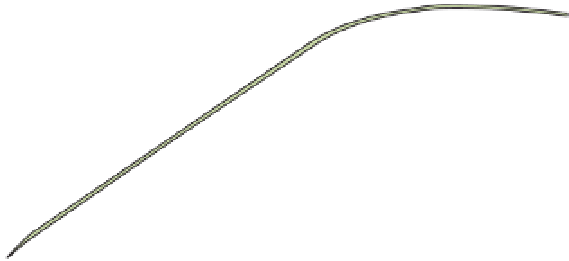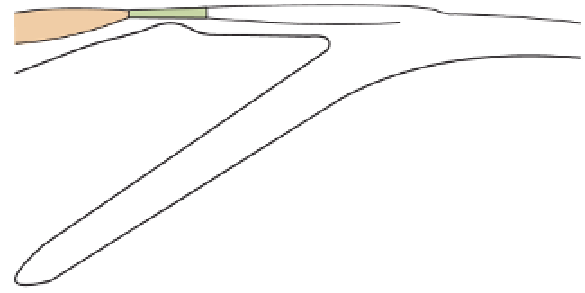Geology Reference
In-Depth Information
from the remainder of the upper
plate to form a new
micro-plate.
This
process accounts for the areas of ocean
that lie between the island arcs of the
western and northern Pacific and the
Asian mainland as seen in Figure 2.2.
volcanic
island
arc
Figure 3.10
Destructive boundaries.
Schematic cross-sections showing:
A.
Oceanic subduction zone: cold oceanic
lithosphere descends beneath an ocean
trench, partly melts, and forms a volcanic
island arc on the upper oceanic plate.
B.
Continent-margin subduction zone: the
oceanic lithosphere descends beneath
the margin of a continent, producing
a volcanic arc on continental crust.
C.
continental collision zone: eventually
a continent on the lower lithosphere
plate reaches the subduction zone,
and is underthrust beneath the upper-
plate continent; the continental crust is
deformed and thickened, and further
convergence ceases.
continental
plate
ocean
trench
oceanic
plate
3
melts
16
17
A
volcanic
arc
Plate collision and mountain building
Where two continental plates collide, a
zone of crustal overlap is created that
leads to a great increase in the thick-
ness of the continental crust. In certain
cases, crustal thicknesses of up to 80
kilometres have been recorded, for
example in the Alps, compared to a
normal crustal thickness of around 33
kilometres. Because of the buoyancy of
continental crust compared with the
underlying denser mantle, a consider-
able proportion of this extra crustal
material is elevated to form mountain
ranges with heights of up to 8 kilometres
above sea level; these are supported
by a much greater thickness of crustal
material in a mountain 'root' beneath
B
mountain
belt
C
boundary (Figure 3.11). As the lower
plate descends into warmer regions of
the mantle, some of the crustal material
melts, and the resulting magmas ascend
into the upper plate, forming igneous
intrusions within the upper-plate crust
and volcanoes at the surface. Where this
zone of volcanoes lies on an oceanic
upper plate, it is partly submerged and
forms an
island arc
. Present-day exam-
ples of volcanic island arcs are widely
distributed in the western Pacific Ocean,
eastern Indian Ocean, and in the Carib-
bean (
see
Figure 2.2). Continental-mar-
gin subduction zones are situated along
the Pacific margins of South and Central
America, and of the north-western USA.
form a
back-arc basin
(e.g. see Figure
3.11); in some cases, this basin may be
underlain by new oceanic crust, which
causes the volcanic arc to separate
SeaofJapan
volcanic
arc
continental
crust
Pacific
Ocean
back-arc basin
trench
oceanic
crust
mantle
lithosphere
asthenosphere
asthenosphere
200
depth,
km
400
uppermantle
600
Back-arc spreading
Under certain conditions, the sub-
duction process causes the crust on
the upper plate, behind the volcanic
arc, to be extended and thinned to
Figure 3.11
Subduction zone beneath the Japan island arc. Cross-section showing the distribution of
earthquake foci (red dots) indicating the position of the descending lithosphere slab at depth. Note
the back-arc basin between the Japan arc and the mainland. After Uyeda (1971).




































































































Search WWH ::

Custom Search